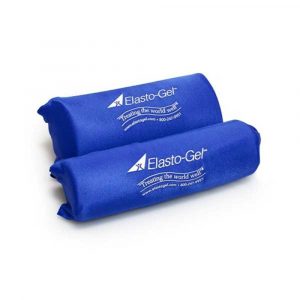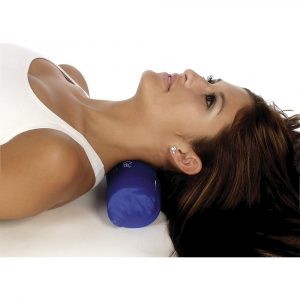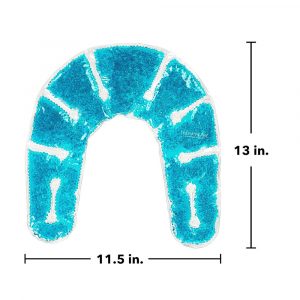Ice Packs For Neck Pain: A Quick and Viable Remedy
Neck pain is a problem that many people suffer from. There are a variety of methods to alleviate neck pain. There are exercises to help neck pain, as well as various forms of other methods. However, ice packs for neck pain can be a very effective and inexpensive solution.
 Ice packs represent a class of treatment known as cryotherapy. Ice packs for neck pain work best when the pain is the result of an inflammatory response from an injury. The inflammatory response can be part of a natural healing process of another underlying condition, but unfortunately can be quite painful. Applying a cold item to an inflamed area will help to to reduce the inflammation and reduce the pain.
Ice packs represent a class of treatment known as cryotherapy. Ice packs for neck pain work best when the pain is the result of an inflammatory response from an injury. The inflammatory response can be part of a natural healing process of another underlying condition, but unfortunately can be quite painful. Applying a cold item to an inflamed area will help to to reduce the inflammation and reduce the pain.
The cooling of tissues leads to a decrease in local tissue metabolism, constricting blood vessels and decreases nerve conduction, producing an analgesic affect. There are many ice packs for neck pain available in different shapes and sizes.
How To Apply Ice Packs For Neck Pain
- There are 3 ways to use ice packs on the neck:
- Placed directly on the skin of the neck
- Wrapped in a dry towel prior to placing on the neck
- Wrapped in a warm, moist towel before using on the neck
The last method is used when there should be a gradual adapting to cold by the initial warmth and the moisture helps to enhance the cooling effect after adaptation. This helps to avoid any initial sudden reaction to cold which can tense the muscles. The last 2 methods help to prevent frostbite from direct application to skin.
How Long To Apply Ice Packs For Neck Pain
Ice packs are usually applied for 20 – 30 minutes for maximum effect. After 30 minutes, the packs lose their level of therapeutic coolness and must be cooled again, where it can take 45 – 60 minutes to reach a temperature for therapeutic benefit. When new ice packs are purchased, they need to be cooled for approximately 6 hours before the first use. If ice packs are store for long periods of time, they should be taken out, defrosted, wiped clean, dried and then refrozen about every 6 months to ensure effectiveness.
How To Use Ice Packs For Neck Pain
There are various types of ice packs for the neck which can easily be stored in the freezer or refrigerator. During application, they can be strapped or wrapped around the neck and/or shoulder area when sitting. Ice therapy can be additionally delivered to the neck through the use of a special therapeutic neck roll pillow for lying on your back. These methods make applying ice packs for neck pain easy, comfortable and effective for home use.
For an acute injury to the neck where there is pain and inflammation like whiplash, you can use an ice pack for 10 minutes each waking hour for the first 24 – 48 hours. If this is not practical, you can use a 15 minute application every 2 – 4 hours. If you have to improvise for an emergency, crushed ice or a bag of frozen vegetables can be placed in a plastic bag and wrapped in a thin towel. If you have known neck issues like a herniated disc or degenerative arthritis, you neck may be more susceptible to injury or flare-ups involving inflammation, therefore, it is wise to have an ice pack that is specifically designed for the neck readily available. Many of these specially designed ice packs for the neck also have a dual function in that they can be used for heat therapy, making them quite versatile.
Combination Therapy With Ice Packs
There is a method whereby ice and heat are combined, which many health care providers will recommend. Most commonly indicated for acute or recent injury with swelling. The goal is to permit the benefit of heat therapy for neck pain, without increasing swelling and produce a type of pumping action to increase blood circulation and reduce pooling of inflammation by alternating the decrease in circulation of ice therapy and the increase in circulation with heat therapy. It is important when using this method to begin and end with heat therapy. It is advisable to have 2 of the same types of hot/cold therapy packs available for consistency of application to increase effectiveness.
When To Use Ice Packs For Neck Pain
A 2015 review in Postgraduate Medicine indicates, “The physiological effects of cold therapy include reductions in pain, blood flow, edema, inflammation, muscle spasm, and metabolic demand.”
Ice therapy for neck pain is indicated for acute or recent injuries or in conditions where there is inflammation or swelling. It is appropriate when used for many types of sprains, strains, bursitis, arthritis and tendinitis. These are conditions where swelling is generally present and respond well to cold therapy. This is not always the case; a stiff neck in the morning from sleeping by a cold draft or under a ceiling fan, as well as an poorly designed pillow may respond better to heat therapy. Cold therapy will increase muscle tone and is not recommended for relaxation. In general, brief periods of cold therapy can help relieve pain and remove inflammation and can help relaxing muscle spasm due to the reaction from pain and swelling. Cold therapy reduces inflammation by decreasing blood pressure locally and reducing the amount of fluids pooling in the area by promoting drainage via the lymphatic system.
When Not To Use Ice Packs For Neck Pain
Ice packs are very safe and have few contraindications, however, some individuals are not able to tolerate cold therapy. This may be due to a genetic factor, a neurological disorder where receptors to cold are hypersensitive or instances where there is impaired circulation like diabetes and arteriosclerosis, some collagen diseases and rheumatoid or gouty arthritis. If you are not sure, always consult with your health care provider. As an alternative, there are topical pain relievers that are easy to apply.

















